Learn to fix common sewing machine problems & get better results.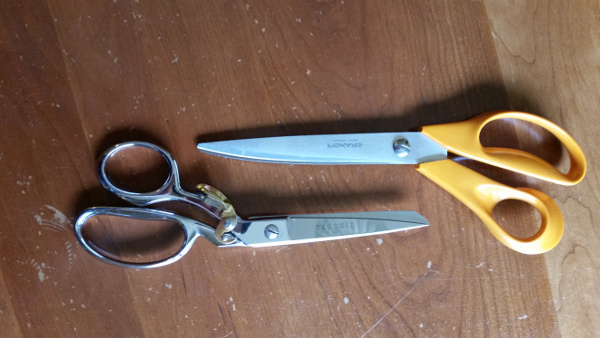
Free Beginner Sewing Class

I teach sewing to oodles of beginner sewers and advise them all to start with high quality tools from the start. The good stuff, plain and simple, will perform much better than the cheap stuff. And, if you take care of your supplies they will last you forever. Start with a basic set and then add other useful items as you build your skills and tackle more projects.
Here are items I consider the must-have tools to get you sewing.
1. Scissors
Every beginner sewing kit needs three pairs of scissors.
The first and most important, is a pair of the best quality dressmaker shears you can afford. Here price matches performance. The more you pay, the better the scissors. High quality scissors will cut through fabric with ease. You should not have to work hard to cut fabric. If you do, your scissors are not good enough. So, invest in a good pair. They are safer and easier to use – good qualities for any new sewer.

Only use them to cut fabric, absolutely nothing else! And, guard them with your life. Don’t let your kids or spouse get their hands on them. Take very good care of these scissors and they will last you, literally, a lifetime.
Watch the sales and look for coupons from your local fabric store. Buy them when they are 50% off. That’s how you make sewing economical.
The second set you’ll need are a small pair with sharp points. These will sit next to your sewing machine ready to snip threads, clip close to seam lines and clip curves. Your dressmaker shears are too big and clunky for these tasks.
The last pair you most likely already own — a plain pair of paper or utility scissors. These you use for everything other than fabric. There are loads of wonderful patterns you can download and print from the Internet, including hundreds of free sewing patterns right here on Bluprint. Use these scissors instead of your good dressmaker shears to cut them out since they will most likely be printed onto regular copy paper. That’s just one reason to have them but as you sew there will be plenty of times they will come in handy.
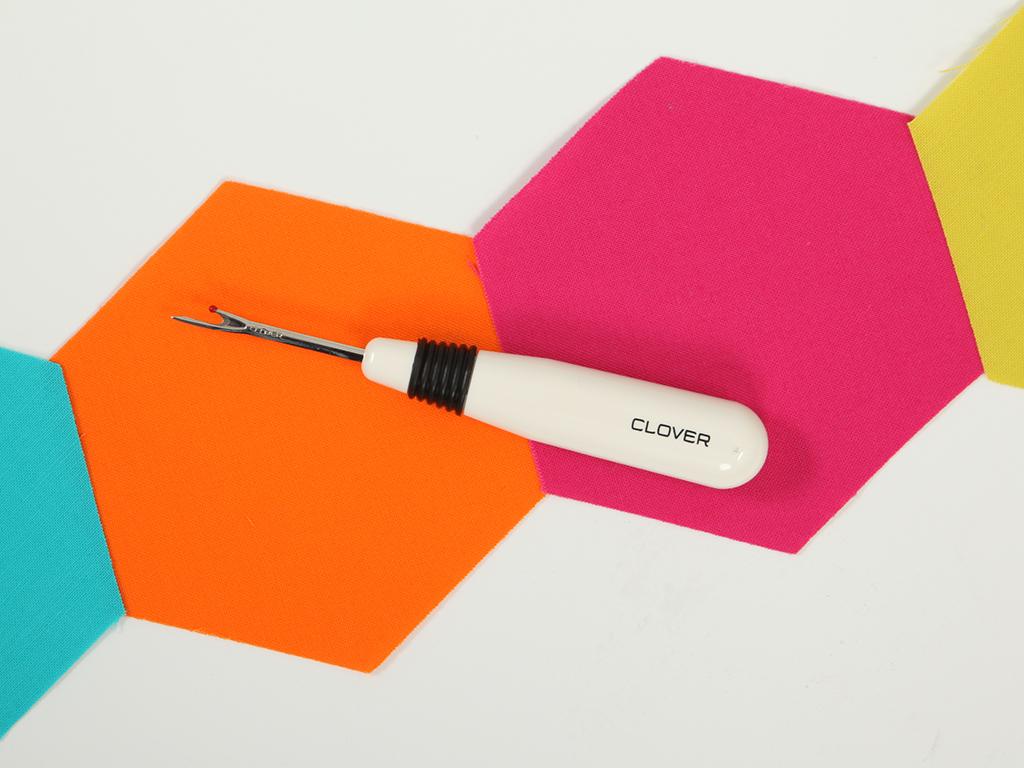
2. A good and comfortable seam ripper
If you just purchased a new sewing machine, a small seam riper is likely to be included with the accessories pack. That one is just fine to get you started. If not, invest in a good one. You want one that is super sharp so it will ripe stitches fast and easy, and has a comfortable grip.
3. Good pins
Wow, I could elaborate on these for pages, but I will spare you my dissertation. The notions walls are packed with all kinds of pins — pretty ones, plain ones, short ones and long ones.
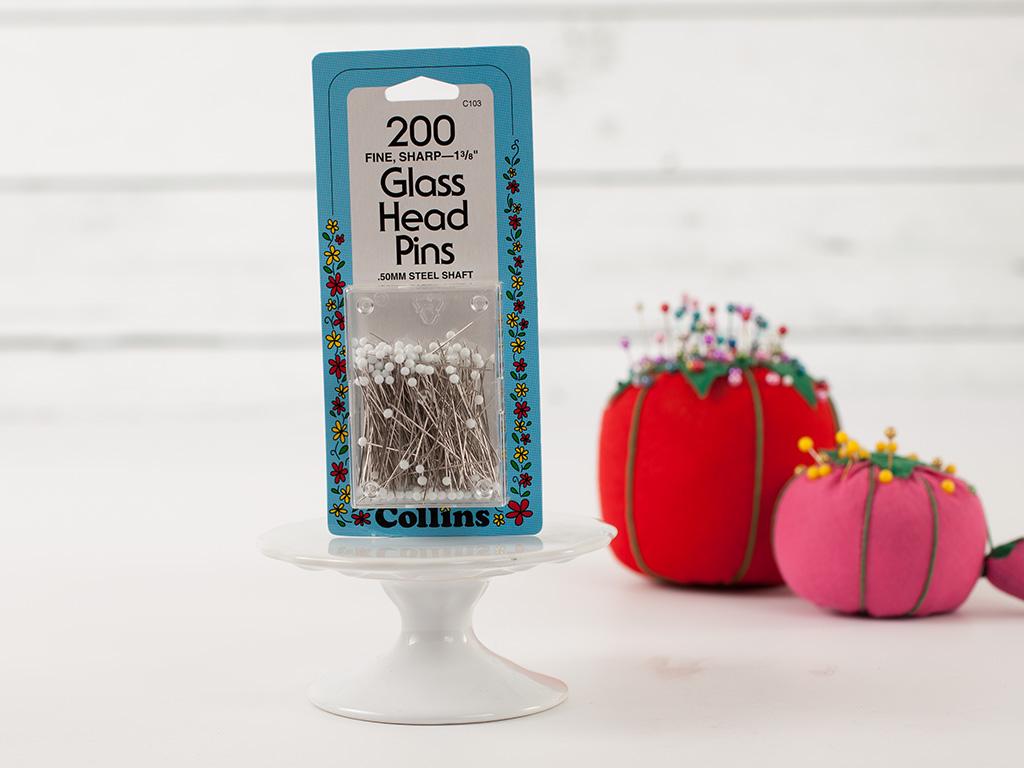
If you want a set of pins that are dependable and will glide through most fabrics with ease, invest in glass head pins. They have been my default pins for ages. What distinguishes these from all other pins are the ball heads that are made of glass, not plastic. That’s important because often when sewing you will need to press something in place with pins in the project. Glass heads pins won’t melt under the heat of an iron, while plastic head pins most definitely will. Not a good thing!
The other reason I like them is they glide through most fabrics with ease. The shaft will not rust and they are super sharp, all important characteristics you should look for in pins.
4. Measuring tools
You probably already have a 12” school ruler and/or a yardstick. That’s a good start. But, if you plan to sew clothing those simply won’t do to take body measurements. Taking body measurements calls for using a measuring tape. Buy one that is 60″ long, no more unless your goal in life is to make 9-foot tall drapes. Working with a measuring tape longer than 60″ is just too cumbersome. Also, buy one where no matter what end you pick up it has a 1″ on one side and a 60″ on the other side. In other words, the numbers are printed in opposing directions. You won’t believe what a convenience this is.
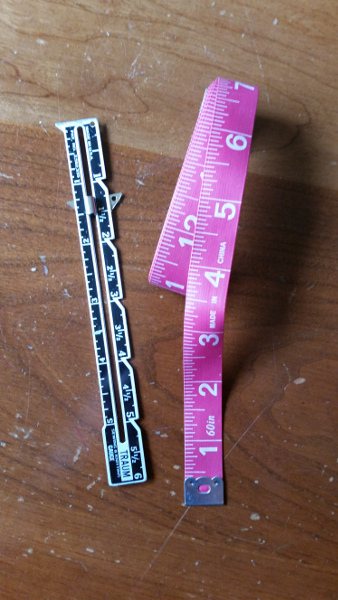
Other must-have measuring tools include a 6″ sewing gauge and some see-thru rulers. The sewing gauge is a metal (preferred over plastic) ruler measuring just 6″ long with a sliding bar that moves to whatever measuring increment you desire. Once set to your desired increment it can be used to achieve a consistent measurement, such as when turning up a hem. This tool has an unending number of uses and you will find yourself using it all the time.
Begin collecting see-thru rulers as they are golden when it comes to sewing everything from crafts, to quilts, and making clothing. Typically marked in 1/8” increments they are great for all kinds of alterations, pattern drafting or any simple measuring. The see-thru nature is great for being able to see what you are doing at all times. Designed primarily for quilting they are great for any type of measuring necessary.
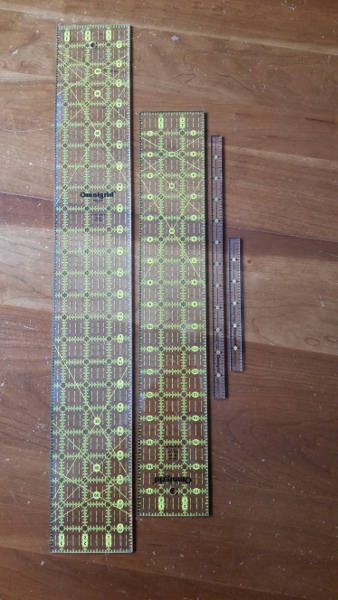
These come in any length and width imaginable as well as in square, triangle and other geometric shapes. For garment sewers start with one that is at least 18” long and 3” wide. As your sewing develops invest in larger ones and/or smaller ones.
5. Marking tools
If you are using commercial patterns you will most likely need to transfer some type of markings from the pattern to the fabric. There are several marking tools and methods to do this and therefore, a wide variety of tools to choose from. It’s important to know that the method and tools you use is always dictated by the fabric. The surface, thickness and stability of the fabric will determine which marking method to employ.
For hard surface, stable fabrics, like basic cottons, the easiest to use method is transfer (or tracing) paper along with a tracing wheel.This is nothing more than carbon paper for fabric, the difference being this stuff will come out while real carbon paper will not. Simply sandwich a double-faced sheet of transfer paper between the two layers of fabric (wrong side) under the pattern marking and with a tracing wheel trace the lines to be marked. This wheel will transfer the markings onto the fabric.
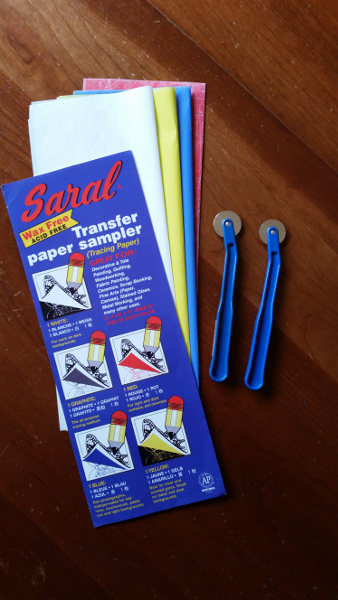
For materials that are less stable, marking pens or chalk are the next best options. These felt tip pens work just like Sharpies, but again, here the ink will dissolve or disappear while for Sharpies ink markings are permanent!
In the home sewing world these pens come in basically two colors – blue and purple. Blue pens are water-soluble, which means by applying a bit of water to the blue marking it will completely dissolve and disappear. The purple stands for disappearing ink. With time the purple color will simply evaporate and disappear just like magic. Just remember, if you use a purple pen but don’t get back to sewing in a month, the mark will most likely have disappeared and will need to be redone.
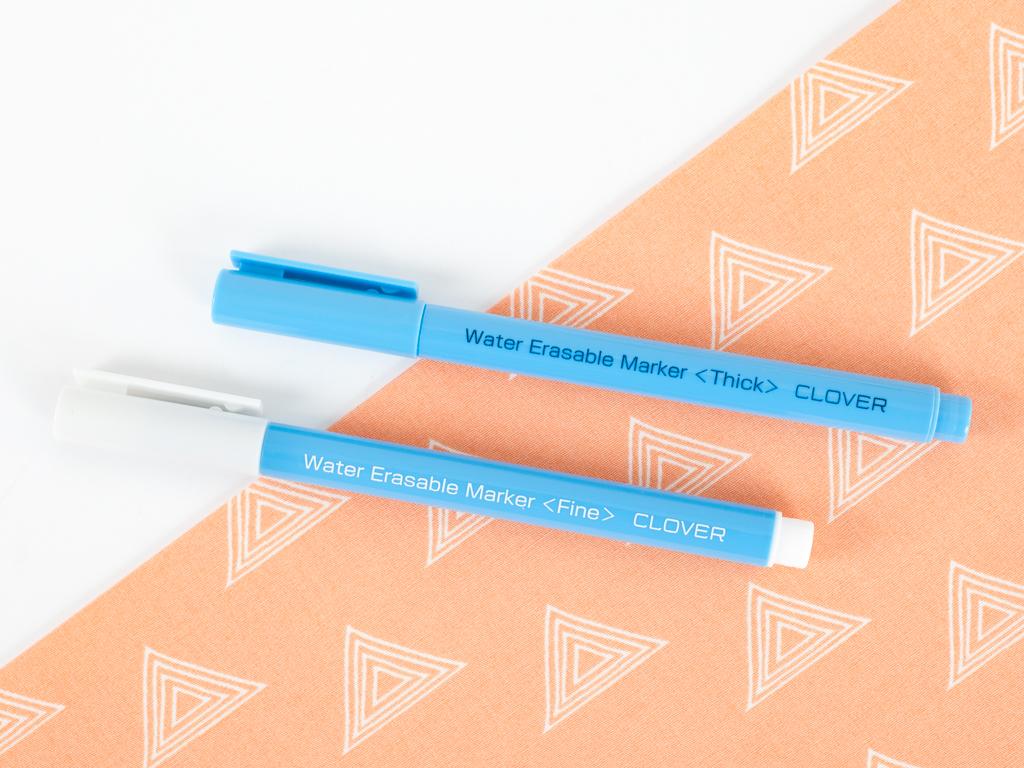
Chalk is another option that works great on soft surface fabrics, like fleece or lofty wools. They tend to be the marking of choice for darker colored fabrics. Chalk markers come in a variety of forms. Tailor’s chalk is one of the most common forms, but they also come in the form of pens and pencils. The ones I like best come in the form of chalk powder that is dispensed through a wheel — very cool and effective.

6. Painter’s tape or any colored tape
Most sewers would not include this as a must-have, but I do as it is a godsend for most new sewers still learning to sew a straight line. I like to keep a roll of blue painters tape in a ¾” width next to my machine at all times. It’s handy, easy to use and it just another insurance to achieving straight and even sewing lines.
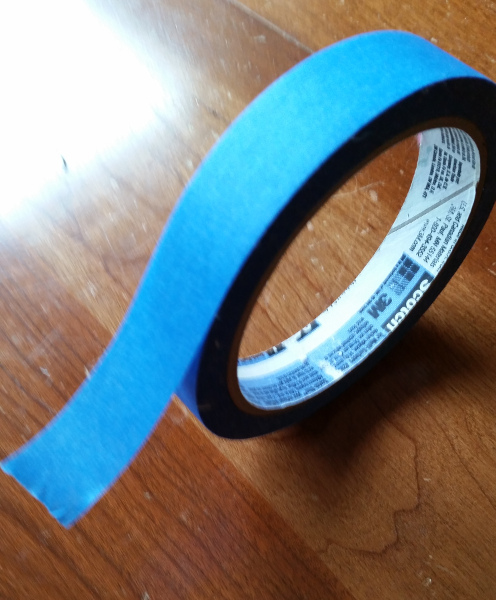
Free Beginner Sewing Class

Learn to fix common sewing machine problems & get better results.

Helpful!
Our (just turned!) 8 granddaughter has gotten interested in sewing, but I'm looking for online lessons for everything from basic sewing to using a machine and making items from patterns. Please send information to my daughter's email listed above.
I want to learn to sew; but, I get very frustrated with not knowing how to fix the problem with the messed up stitches.